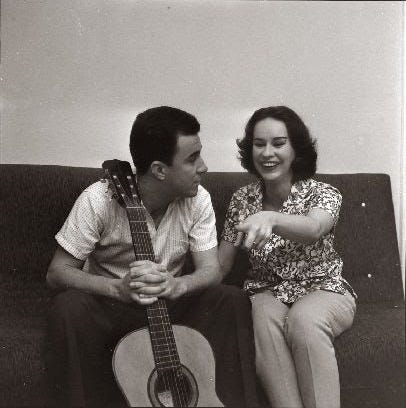Beyond Bossa Nova
Hey there! Welcome to SONAR's premium newsletter. Every Thursday, enjoy a deep dive into a genre or region and learn more about data-driven artists on the rise and trends in music.
In my (half-hearted) attempt to watch all Oscar-nominated Best Picture films this year, I found myself sobbing in the theater during I'm Still Here.
Walter Salles’ film tells the story of Eunice Paiva, who is left to raise her five children during Brazil’s military dictatorship in the 1970s and ’80s after the kidnapping and disappearance of her husband, Rubens Paiva—a prominent activist and politician. During the oppressive regime, Eunice must rebuild her family’s life while continually seeking answers about her husband’s fate.
What really touched me throughout the film was the soundtrack. It's stacked with stunning classic Brazilian bossa nova and soulful rock that paint the perfect picture of life in 1970s Rio de Janeiro.
The 2025 Rio Carnival was also just a few weeks ago, shining a spotlight on Rio. The annual celebration is a reminder of Brazil’s rich culture, community—and, of course, the music.
So this week, we're diving into Brazilian bossa nova, where it came from and where it's going.
The Beginning
The term could also translate to protuberance or protrusion—slang at the time for sophisticated fashion or talent that stands out.
Since its start in the late ‘50s, bossa nova has been a youthful celebration of romance and beach culture in Rio. The founding fathers were composer Antônio Carlos (Tom) Jobim and guitarist João Gilberto. Gilberto was searching for a new way to play guitar and stylized the rhythm by adding jazz chords to it: ”…instead of hitting the strings, he played the low notes with his thumb and, at once, plucked the other strings with his index, middle, and ring fingers.”
Gilberto added lyrics by singing in a quiet, velvety manner. Upon taking his new style back to Rio, he impressed Jobim and the two began composing the genre’s first tracks and albums.
As American musicians toured Brazil, they quickly found inspiration from bossa nova and the style exploded from there. In the early ‘60s, Brazilian musicians made their debut at New York City’s Carnegie Hall with a concert titled “New Brazilian Jazz.”
Stan Getz recorded The Girl from Ipanema (Garota de Ipanema) in 1964, launching bossa nova into the mainstream. The song is now the second-most recorded in history, and though there is a lot of lore surrounding the girl herself and the song’s origins, it was originally composed by Jobim and featured Astrud Gilberto, João’s wife, on vocals.
Others to Note
One of the genre's biggest stars is Nara Leão, often called "the muse of bossa nova."
Keep reading with a 7-day free trial
Subscribe to SONAR to keep reading this post and get 7 days of free access to the full post archives.






